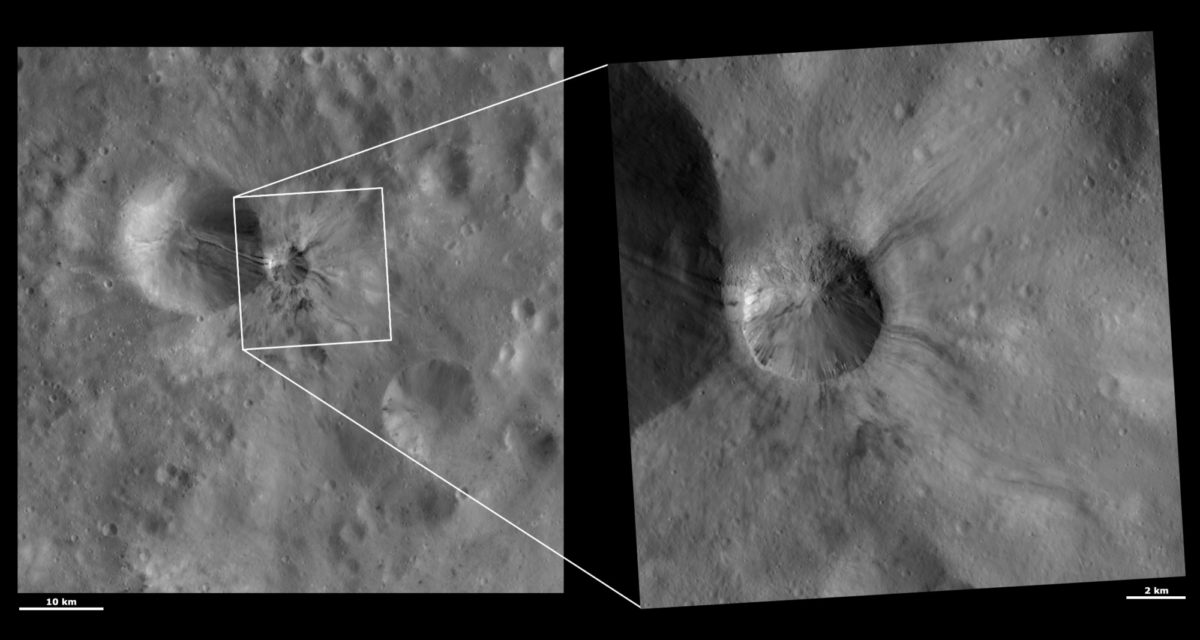Emily Lakdawalla • Aug 13, 2012
Pretty picture: Vesta's crater Aelia in high resolution
A week after Curiosity's landing, I thought it was time I spent some attention on a planetary body other than Mars! As Dawn is departing Vesta, the mission continues to release pretty pictures from the period that they spent relatively close to the asteroid. I think my favorite features on Vesta are its streaky craters. Today's image release shows one of the streakiest: Aelia, a little crater on the flank of a larger one, near Vesta's equator. (Check my cheat sheet to see other prominent named craters on Vesta.)

Investigating the higher-resolution photo, I continue to think that Aelia is a very pretty crater, but there are also some neat things to observe. First of all, the darkest streaks within the crater seem to originate below lumps in the crater wall. I'm not convinced that those lumps line up into layers, but they certainly speak to a composition that varies considerably with depth, which is pretty cool.
I love the texture of the ejecta and its wavy flowiness. Look at the upper right portion of the ejecta and you can see an interesting planetary geology process at work. Planetary scientists like to use the density of cratering as a proxy for age: More craters, older surface. Surfaces with few craters must have had their older craters erased somehow, either by wiping them away, covering them up, or modifying them so much that you can't discern them anymore. If you look at that ejecta field, you'll see subdued-looking medium-sized craters (maybe 500 to 1000 meters in size) and fresh-looking teeny craters, but not a lot in between. The ejecta is a pile of gravel mantling the old surface. It was thick enough to completely fill smaller craters, but too thin to fill the larger 500-meter-ish ones, so we can still see those, but they look very faint. The smaller, fresher craters happened after Aelia, and if you look elsewhere, you'll see those smaller craters everywhere.
I just checked the Small Bodies Node at the Planetary Data System and the image data is not there. (It was once, but then it was removed, and it's now public knowledge that it's being held up by a conflict over what coordinate system to use to describe locations on Vesta.) This is such a lovely data set -- I can't wait to see what space enthusiasts can do with it!
Support our core enterprises
Your support powers our mission to explore worlds, find life, and defend Earth. You make all the difference when you make a gift. Give today!
Donate

 Explore Worlds
Explore Worlds Find Life
Find Life Defend Earth
Defend Earth

